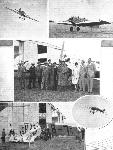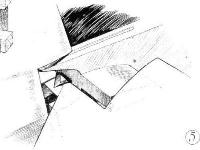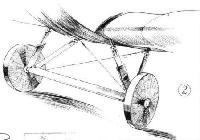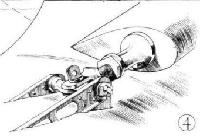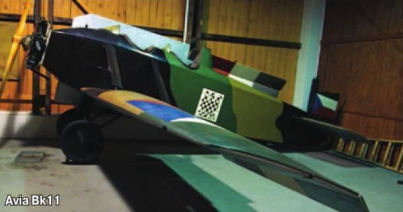
Варианты
- Avia - BH-9 / BH-10 / BH-11 / BH-12 / BH-16 - 1923 - Чехословакия
- Praga - BH-111 - 1932 - Чехословакия
Avia BH-9, BH-10, BH-11 и BH-12
Подкосный туристский и спортивный низкоплан Avia BH-9 разработан на базе модели BH-5. На самолете был установлен двигатель Walter NZ мощностью 60 л.с. Прототип BH-5 поднялся в небо в 1923 году. Интерес к аппарату проявили чешские военные, которые заказали партию из 10 машин для использования в качестве связных и учебных. Самолет получил военное обозначение В.9.
BH-10 стал одноместной пилотажной модификацией самолета BH-9, первый экземпляр был построен в 1924 году, а всего собрали не менее 20 самолетов, в том числе 10 для ВС Чехословакии. Двухместный BH-11, построенный в 1923 году, был очень похож на BH-9. Вооруженные силы Чехословакии получили 15 самолетов BH-11 под обозначением В.11.
В 1929 году появился BH-11B Antelope - спортивный вариант гражданского назначения. BH-11B строился ограниченной серией и был крупнее и тяжелее, чем BH-11. BH-11C имел тот же мотор, что и BH-11, но крыло большего размаха.
BH-12 - еще один двухместный вариант самолета BH-9, от более ранних машин его отличал иной профиль крыла. Самолет был собран в 1924 году для удовлетворения потребности в спортивном самолете со складным крылом (консоли крыла поворачивались на шарнирах и складывались вдоль фюзеляжа). Со сложенным крылом самолет транспортировался на прицепе за автомобилем.
ТАКТИКО-ТЕХНИЧЕСКИЕ ХАРАКТЕРИСТИКИ
Avia BH-9
Тип: двухместный спортивный и учебный самолет
Силовая установка: один звездообразный мотор Walter NZ мощностью 60 л. с. (45 кВт)
Характеристики: максимальная скорость на оптимальной высоте 158 км/ч; крейсерская скорость 125 км/ч; практический потолок 4500 м; дальность полета 470 км
Масса: пустого 345 кг; максимальная взлетная 550 кг
Размеры: размах крыла 9,72 м; длина 6,64 м; высота 2,53 м; площадь крыла 13,60 м2
Описание:
- Avia BH-9, BH-10, BH-11 и BH-12
- Flight, June 1924
THE THIRD INTERNATIONAL AERO SHOW AT PRAGUE - Flight, December 1926
The Paris Aero Show 1926 - Flight, November 1928
BERLIN AERO SHOW 1928
Фотографии
-
Flight 1924-06 / Flight
The "Avia" B.H.9. two-seater sporting machine, fitted with 60 h.p. Walter radial engine.
-
Flight 1924-06 / Flight
GENERAL VIEW FROM THE THIRD INTERNATIONAL AERO EXHIBITION AT PRAGUE: The "Avia" B.H.9.
-
Flight 1925-10 / Flight
Prague - Croydon - Prague: Lieut. Jira, of Czechoslovakia, who recently flew from Prague to Croydon and back on an Avia B.H. 9 low-wing monoplane, 60 h.p. Walter engine. Although he did not succeed, owing to bad weather, in making non-stop flights as intended, he nevertheless put up a remarkable performance, covering the 2,525 km. (1,565 miles) at an average speed of 140 k.p.h. (86 9m.p.h.)
-
Flight 1925-07 / Flight
Dr. Lhota standing by the Walter engine of his B.H.9 monoplane, on which he flew from Prague to Rome and back.
-
Flight 1925-07 / Flight
Регистрационный номер: L-BONF PRAGUE - ROME - PRAGUE: Dr. Lhota, the well-known Czech pilot, recently flew from Prague to Rome and back in this Avia B.H.9 fitted with 60 h.p. Walter engine.
-
Flight 1926-09 / Flight
Регистрационный номер: L-BONG PRAGUE - PARIS - PRAGUE IN A LIGHT 'PLANE: Lieut. Jira, the well-known Czecho-Slovakian pilot, and the Avia B.H.9 (60 h.p. Walter engine), on which he flew from Prague to Paris and back non-stop on August 31 - a distance of 1,180 miles in 13 hrs. 43 mins.
-
Flight 1928-01 / Flight
CZECHOSLOVAKIA ATTACKS WORLD'S LIGHT PLANE RECORDS: (3) The Avia B.H.9 two-seater (60 h.p. Walter) on which (4) Capt. Vlcek and Lieut. Chrastina also established a record, on the same day, for the two-seater class, with 1305-546 km. (809-5 miles).
-
Flight 1924-06 / Flight
The "Avia" B.H.10 single-seater 60 h.p. Walter engine.
-
Мировая Авиация 36
На фюзеляже за кабиной у BH-10 - пилотажной модификации самолета BH-9 - был установлен характерный противокапотажный пилон.
-
Flight 1925-10 / Flight
THE THIRD PRAGUE AVIATION MEETING: One of three successful competing machines. One of the Avia B.H.10 monoplanes (60 h.p. Walter) which took part in the Sport 'plane race.
-
Flight 1925-12 / Flight
The Avia B.H.11, fitted with a 60-h.p. Walter engine, which was placed first in the Coppa d'Italia, which took place in Rome, November 12-19.
-
Flight 1926-06 / Flight
1,530 miles in an Avia light 'plane: Mr. Lhota and the Avia B.H.11 monoplane (60 h.p. Walter engine) - a Czechoslovakian combination - on which he flew about 1,530 miles from Bucharest to Prague, with a passenger, in 18 hrs. 20 mins. flying time.
-
Flight 1926-12 / Flight
THE AVIA B.H.11, with Walter engine, is the winner of a number of competitions, most recently that for the "Coppa d'Italia."
-
Flight 1928-06 / Flight
CZECHOSLOVAKIAN RECORD: This is Maj. Vicherek, the Czechoslovakian test pilot, who set up the record of 20 hours' continuous flying on the low-winged monoplane Avia BH 11 (Walter 60 h.p. engine).
-
Flight 1926-08 / Flight
THE WINNERS OF THE FRENCH LIGHT 'PLANE COMPETITION: In the centre the Czechoslovak Team, from left to right: Fous, works manager; Pacak, Volejnik and Horak, mechanics; Fritsch, chief pilot; Pavel Benes, chief designer; Capt. J. Jira, military pilot (not in the competition); Mrs. Lhota, Dr. Lhota and Milos Bondy, managing director. In the upper right-hand corner, Dr. Lhota is seen in the landing test, while the other two photographs show the Avias in different attitudes of flight.
-
Flight 1929-08 / Flight
Регистрационный номер: L-BABH [2] PETROL TEST AT THE ORLY MEETING: (2) The French Caudron 193 low-wing monoplane and the Avia Antelope (Walter)
Другие самолёты на фотографии: Caudron C.190 - Франция - 1929
-
Flight 1929-08 / Flight
Регистрационный номер: L-BABH [2] THE FOLDING TEST AT ORLY: (1) Avia Antelope (Walter engine) with German B.F.W. in the rear
Другие самолёты на фотографии: Messerschmitt BFW M.23 / M.27 - Германия - 1928
-
Flight 1926-12 / Flight
The "Avia B.H.11," with 60 h.p. Walter engine is a two-seater light 'plane with many victories to its credit, most recently that of the "Coppa d'Italia."
-
Flight 1926-08 / Flight
THE FRENCH LIGHT 'PLANE COMPETITION AT ORLY: The eight competing machines: 3. No. 5, Avia B.H.11 (pilot, Dr. Lhota).
-
Flight 1926-08 / Flight
Регистрационный номер: L-BONI [3] THE FRENCH LIGHT 'PLANE COMPETITION AT ORLY: The eight competing machines: 2. No. 4, Avia B.H.11 (pilot, M. Fritsch).
-
Flight 1926-11 / Flight
Регистрационный номер: L-BONI [3] WINNERS OF THE 1926 "COPPA D'ITALIA," AND PERMANENT HOLDERS OF THE CUP: On the left the "Avia" B.H.11, with 60 h.p. Walter engine, on which Bican won this year's competition. The group on the right includes Bican, pilot of the machine, Kinsky, his passenger, and Kopexky, Secretary of the Aero Club of Czechoslovakia.
-
Мировая Авиация 36
Регистрационный номер: L-BONI [3] Очень похожий на BH-9, самолет BH-11 развивал максимальную скорость 176 км/ч и обладал дальностью полета 700 км.
-
Flight 1928-01 / Flight
Регистрационный номер: L-BONM CZECHOSLOVAKIA ATTACKS WORLD'S LIGHT PLANE RECORDS: (1) Capt. Cerny who accomplished a flight, on December 8, over a closed circuit covering a total of 1740 728 km. (1,080 miles), thus creating a record for single seaters. (2) Capt. Cerny's Avia B.H.11 single-seater monoplane, with 60 h.p. Walter engine.
-
Flight 1924-06 / Flight
Регистрационный номер: L-BONA [3] THE "AVIA" B.H.12. Three-quarter rear view.
-
Flight 1924-06 / Flight
Регистрационный номер: L-BONA [3] The "Avia" B.H.12, with 60 h.p. Walter engine, has been specially built for the Brussels competition. Three-quarter front view.
-
Flight 1924-06 / Flight
Регистрационный номер: L-BONA [3] THE AVIA B.H.12 WITH WINGS FOLDED. The wings pivot around the front spar, and are then secured to the fuselage, when the machine can be trailed behind a car or motor bicycle, or even wheeled along by hand, as show in the photograph.
-
Flight 1924-06 / Flight
The "Avia" B.H. 16 is a light 'plane single-seater, and will be fitted with a Blackburne engine. The engine shown in this photograph is a Vaslin.
-
Flight 1930-01 / Flight
Sqdr.-Ldr. A. Kubita in his Avia monoplane, which he flew to Lympne for the air meeting. He is the Czechoslovakian Air Attache in England.
-
Flight 1924-06 / Flight
The manner of mounting the balanced elevator and rudder on most of the "Avia" machines. The small fixed tail plane is rigidly built into the tail portion of the fuselage.
-
Flight 1924-06 / Flight
Undercarriage of the B.H.16 light 'plane. The springing is provided by rubber blocks in compression.
-
Flight 1924-06 / Flight
A typical "Avia" strut fitting. The sketch was actually made from the type B.H.12.
- Фотографии















